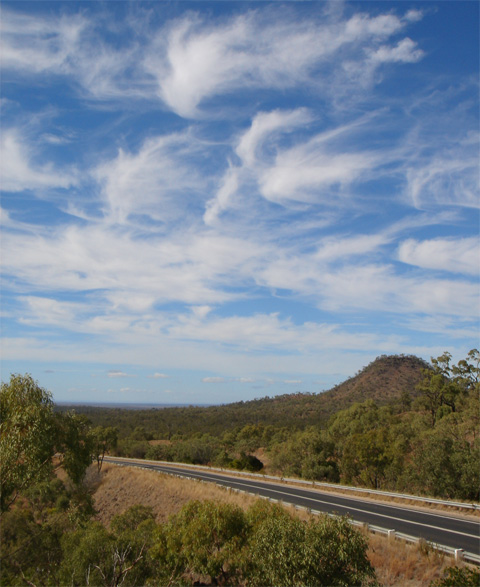The road system in Australia is very good, but as you leave the cities and head into the outback, road quality can vary greatly. Many rural roads are just dirt tracks and many washout during the wet season. Other roads turn into one lane for long distances requiring you to take your left wheels off the road to pass an oncoming vehicle.

Always carry along lots of water, sunscreen, hat, a good local map and a mobile phone if you’re driving out into the bush. Make sure you have a good spare tire, as some cheap Aussie tires don’t last long, especially on the hot roads at high speeds. It’s possible to breakdown hundreds of kilometers from the nearest town.
If you’re not used to driving on the left, it can take some getting used to. A wrong move could put you in a dangerous situation. The best way to change your habit of driving on the right is to follow behind another car going your way. When that’s not possible you may need to repeat the mantra “stay left” over and over until you get the hang of it.
It can be tricky when you’re first pulling into traffic from a side street or driveway. You must look right to make a left, and left-right-left to make a right. You must also remember which lane to turn into. If you’re pulling out of say a shopping area, you must remember to approach the street on the left side of the driveway. You’d be surprised how easy it is to pull up on the right side of a driveway, confusing those trying to pull in, and creating a dangerous situation.
To make a right turn at intersections you must be in the right lane, pull up into the middle and wait for traffic to clear then turn into the left lane. Again following another car helps you get it right.
Driving while sitting on the right side of the car presents a few problems too. First you must use your left hand when using a stick shift. If this is uncomfortable, you might want to get an automatic, as that’s one thing less to worry about. Second, the turn signal is on the right and you’ll likely hit the windshield wipers (on the left) instead of signaling your turn. Third, since you’re used to looking to the right to see what’s behind you in your rear view mirror, using the rear view to your left takes some getting used to.
Roundabouts present another set of problems. Fortunately these are usually very well marked in Australia, where there are often two lanes of traffic going around. You just follow your lane around until your exit appears. The trick is to be in the correct lane for your exit. If you’re just making a left, you should be in the left lane. If you’re going right, you should be in the right lane approaching the roundabout. If you’re going straight, you can usually chose either lane. Be very careful changing lanes in the roundabout and be sure to signal your lane change & turn.
There’s a national push to improve Aussie driving habits. Using every scare tactic in the book, they are swamping the media with images of dead children on TV, billboards warning you that “every K over is a killer” and other catchy lines to remind everyone not to speed and to take a rest break every two hours when driving long distances. This campaign seems to making a difference, as most drivers heed the speed limits now. Driving can actually be relaxing with everyone driving pretty much the same speed and far fewer cars trying to pass you.
Besides speeding, the police are cracking down on another nasty habit, drunk driving. Road blocks are often setup for random breath checks. They only check for alcohol consumption, not marijuana. Although if you warrant a closer look due to some violation (like unbuckled seatbelts), they can bust you for cannabis too.

